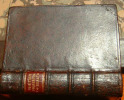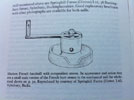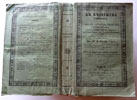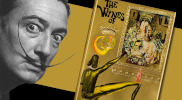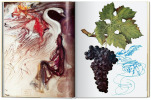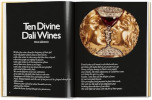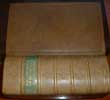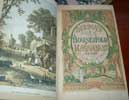Markham.
Gervase
The English Hous-Wife
CONTAINING The inward and outward Vertues which ought to be in a compleat Woman: As her skill in Physick, Surgery, Cookery, Extraction of Oyles, Banqueting stussc, Ordering of great Feasts, Preserving of all forts of Wines, conceited Secrets, Distillations, Perfumes, ordering of Wool, Hemp, Flax: making Cloth and Dying, the knowledge of Dayries: Office of Malting: of Oates, their excellent uses in a family: of Brewing, Baking, and all other things belonging to an houshold. A Work generally approved, and now the sixth time much augmented, purged, and made most profitable and necessary for all men, and the general good of this NATION. By G.M. LONDON, Printed by W.Wilson, for E.Brewster, and George Sawbridge, at the Bible on Ludgate-hill, neere Fleet bridge. 1656.
4to. 1fep. Title Page. [1] 2pp Epistle. 4pp The Table. 1-188. 1fep. On p119 illustrations of wine gages. Bound in dark brown modern half calf with marble boards and calf corners and gilt lines. Spine with raised bands, red label with gilt lettering and lines. Clean internally with very age browning. A handsome copy of a scarce book.
-
Gervase Markham or 'Jervis', born 1568.
English poet and miscellaneous writer, third son of Sir Robert Markham of Cotham, Nottinghamshire. He was a soldier of fortune in the Low Countries, and later was a captain under the Earl of Essex's command in Ireland . He was acquainted with Latin and several modern languages, and had an exhaustive practical acquaintance with the arts of forestry and agriculture . He was a noted horse-breeder, and is said to have imported the first Arab horse into England., otherwise very little is known of the events of his life .
The story of the murderous quarrel between Gervase Markham and Sir John Holies related in the Biographia Britannica (s.v . Holies) has been generally connected with him, but in the Dictionary of National Biography, Sir Clements R . Markham, a descendant from the same family, refers it to another contemporary of the same name, whose monument is still to be seen in Laneham church . Gervase Markham was buried at St Giles's, Cripplegate, London, on the 3rd of February 1637 . He was a voluminous writer on many subjects, but he repeated himself considerably in his works, sometimes reprinting the same books under other titles . His booksellers procured a declaration from him in 1617 that he would produce no more on certain topics . Markham's writings include: The Teares of the Beloved (1600) and Marie Magdalene's Teares (1601) long and rather commonplace poems on the Passion and Resurrection of Christ. His best known book is 'A Way to get Wealth' which contains 'The English House-wife'. It is printed as '2 book' at the top of each page, indicating it is the second-book of Markam's 'Country Contentments' 1st edition - 1615. It was later published as 'A Way to get Wealth' with the 'English Hous-wife' being published as the third book.. It ran to many editions and Oxfords cites - 1623(2nd). (no 3rd). 1631(4th). 1637(5th). 1648. 1649. This copy of 1656(6th). 1660(7th). 1664. 1668(8th). 1675. 1683(9). An edition of 1653 was reprinted in 1907. Never the less, and despite so many editions, it is still a very scarce book and is usually found and sold on its own. It is as an important seventeenth century cookery book and a very interesting item that Oxford rates as having more modern recipes than those of preceding books, albeit with many obsolete dishes. He also rates the medical recipes and finds them disgusting and appalling, with the use of animal dung and other filthy ingredients being frequently used. Surprisingly the first recipe for Haggis is found in the 1615 edition (and subsequent editions) of Markham's 'English Hus-wife' in chapter 8 about the benefits of Oates. NB: I just received an interesting and welcome email from Regula Ysewijn, a food photographer, informing me that Haggis did not appear first in the English Hous-wife as I have mistakenly stated above, but in a cookery book called ‘Liber Cure Cocorum’, from the County of Lancashire in England. Written in verse and dating from around 1430. Called ‘Hagese’ in the book, the general recipe mirrors the one made in Scotland.
As I was born in Scotland, it is a big surprise to find that it now appears our celebrated national pudding possibly originated in England.
I am now going to see if I can take this very surprising news further. My research must now try to answer the following ….
Did the Lancashire recipe originate in Lancashire or any other English location, or did it originate in Scotland and was brought to England. Lets see….
NB: There is an interesting site online called the 'Medievalists.net. There, there is further information about Liber Cure Cocurum to be seen.






|
|

Antiquarian category
ref number:
10923
|







